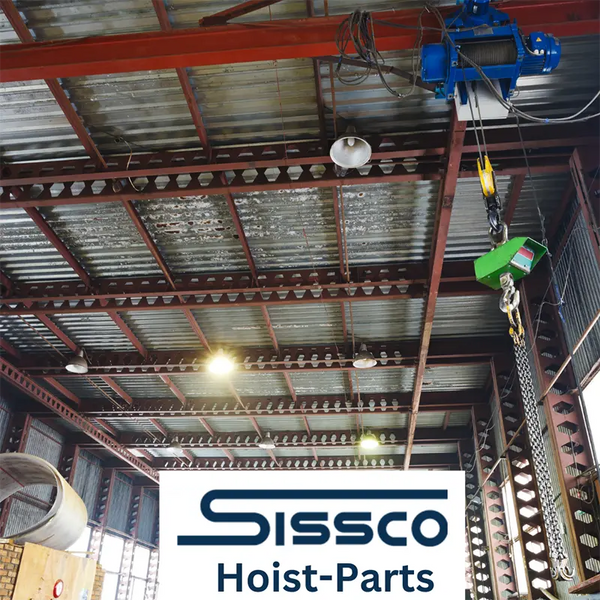
Your hoist creeps a few inches, a brake starts to sing, or a contactor sticks, and the floor wants it solved now. The loudest voice in the room says upgrade, but the line wants uptime, not a science project. You should know this by now. Most stoppages are wear parts reaching the end of their life, and the fastest path back to safe production is a correct, in-kind replacement done today.
Here is the simple rule that keeps teams out of trouble. If your duty, load profile, and process have not changed, replacing the failed part restores the designed performance with the least cost and risk. Upgrade only when the job changes, a compliance gap exists, or the parts supply is no longer viable. Decide with time and risk, not features, and you will win more days than you lose.
Start with Downtime Cost and Real Risk
Before anyone opens a catalog, write down what an idle hoist costs per hour for your line. Include lost throughput, idle labor, expediting, and service travel. Add the safety risk of pushing lifts with the wrong tool while you wait for a bigger project. If a correct part swap gets you running today and an upgrade needs approvals and a longer outage, the math usually answers the question.
Quick calculator you can use right now:
- Lost units per hour × margin per unit.
- Overtime hours to recover × labor rate.
- Vendor or service delay hours × internal standby cost.
If the 48-hour cost is larger than the price of the part and labor, replace the part and book any upgrade for a planned shutdown. That choice protects both production and people.
If Duty Did Not Change, Replace
Duty class and cycle counts decide wear life. If lifts per hour, average load, and shift hours look the same as last year, a failed brake lining, chain, rope, or contactor is a normal wear event. Replace in kind and verify settings. Do not let a normal wear event grow into a weeks-long controls project. Keep a record of the swap, torque values, and test results so the next maintenance cycle is even faster.
Parts are on the Shelf
When the exact OEM or equivalent part is available now and the upgrade path needs engineering, drawings, or special order items, take the fast win. A correct part swap restores known behavior today. Upgrades that require new panels, programming, or structural review belong in a planned outage when you control timing and vendor access.
Check Compliance Before You Chase Features
Do a quick safety and code check. Confirm you have an equipment grounding conductor, functioning upper and lower limits, intact guards, readable labels, and current inspections against your standards and manuals. If a compliance item is missing, address that first with a qualified technician or electrician. Features like radios, variable speed, and soft starts are valuable, but they do not replace required safety functions.
When an Upgrade Hoist Part Pays for Itself Fast
Sometimes the honest answer is to modernize.
- Duty increased, and you are burning through brakes. Variable speed control, smooth starts, and correct brake sizing reduce heat and wear, which in turn cut unplanned stops.
- Precision or placement work increased. Better speed control and fine positioning reduce rework and damage, resulting in savings that exceed the project cost over the next year.
- Obsolescence is blocking uptime. If critical internals are unsupported with long or uncertain lead times, a targeted modernization or new hoist lowers lifecycle cost and risk.
- Communications are causing delays. Non-proprietary radios with strong interference resistance reduce nuisance stops and recover operator time.
Brand Examples We Can Stand Behind
- CM Lodestar: Creeping after stop with normal sound. Replace motor brake disc and rectifier, set air gap, perform loaded hold test, and record coil voltage at release. This restores holding torque without control changes.
- Budgit Hoist Parts: Inconsistent hold on a mechanical load brake hoist. Install the correct load brake kit, clean and inspect friction discs and seats, set torque per procedure, and verify with a timed static test.
- Yale or Shaw-Box: Contactor coil heat and chatter. Replace the contactor and coil, confirm the control transformer tap, and add proper suppression across the rectifier if missing.
- Harrington Hoist Parts: Chain beyond elongation limit. Replace the chain and sheave or pocket wheel as a matched pair, confirm guide alignment, lubricate per spec, and re-tension with a loaded test.
These are fast, proven fixes that return the hoist to its design values without opening a larger project.
Split Plan: Replace Now, Upgrade Later
This is how many plants maintain high uptime and continue to move forward. Replace the failed part today and return the hoist to service. Build a short upgrade list that actually fits your work, such as variable speed, non-proprietary radios, diagnostics, or a gearbox refresh. Stage parts, book labor, and tie the work to a shutdown you already plan. You keep the line moving and still improve the fleet on your terms.
A smart fix is the one that restores safe, reliable lifts with the least time and risk. If your process has not moved, replace the part and get back to work. If the job changed or parts support is fading, plan the right upgrade and do it during a window you control. Tell us your model, serial, and symptoms, and we will point you to the exact brake kit, contactor, chain set, or control part you need today.